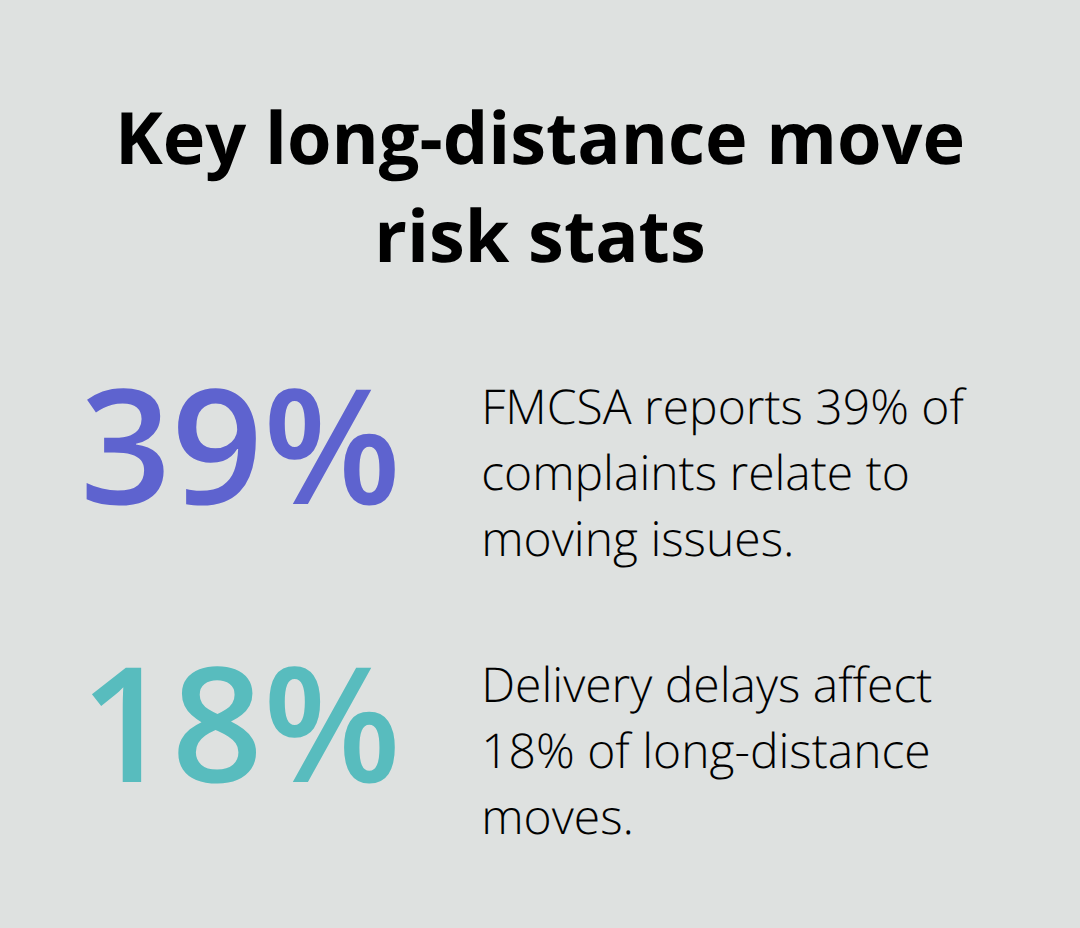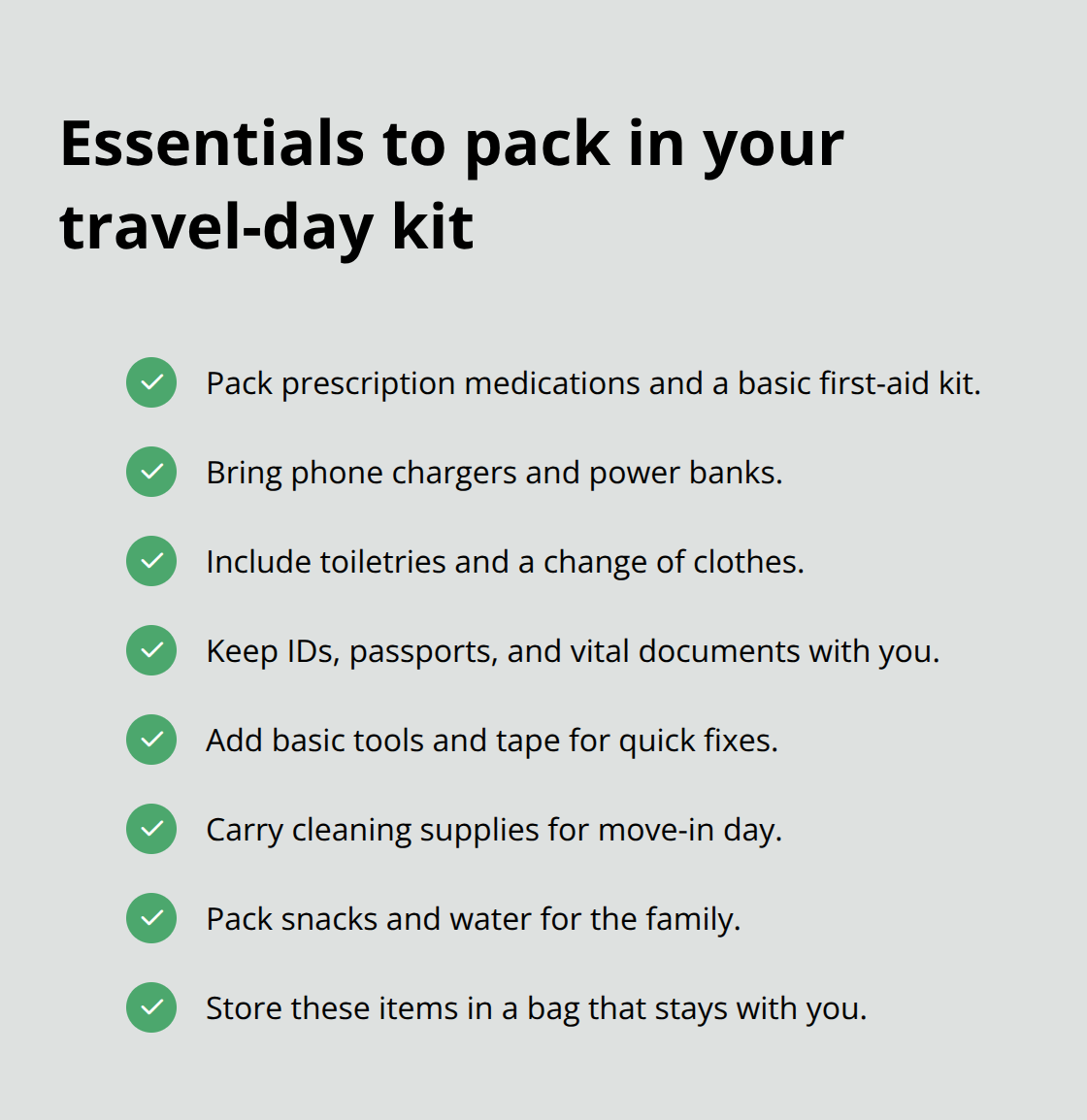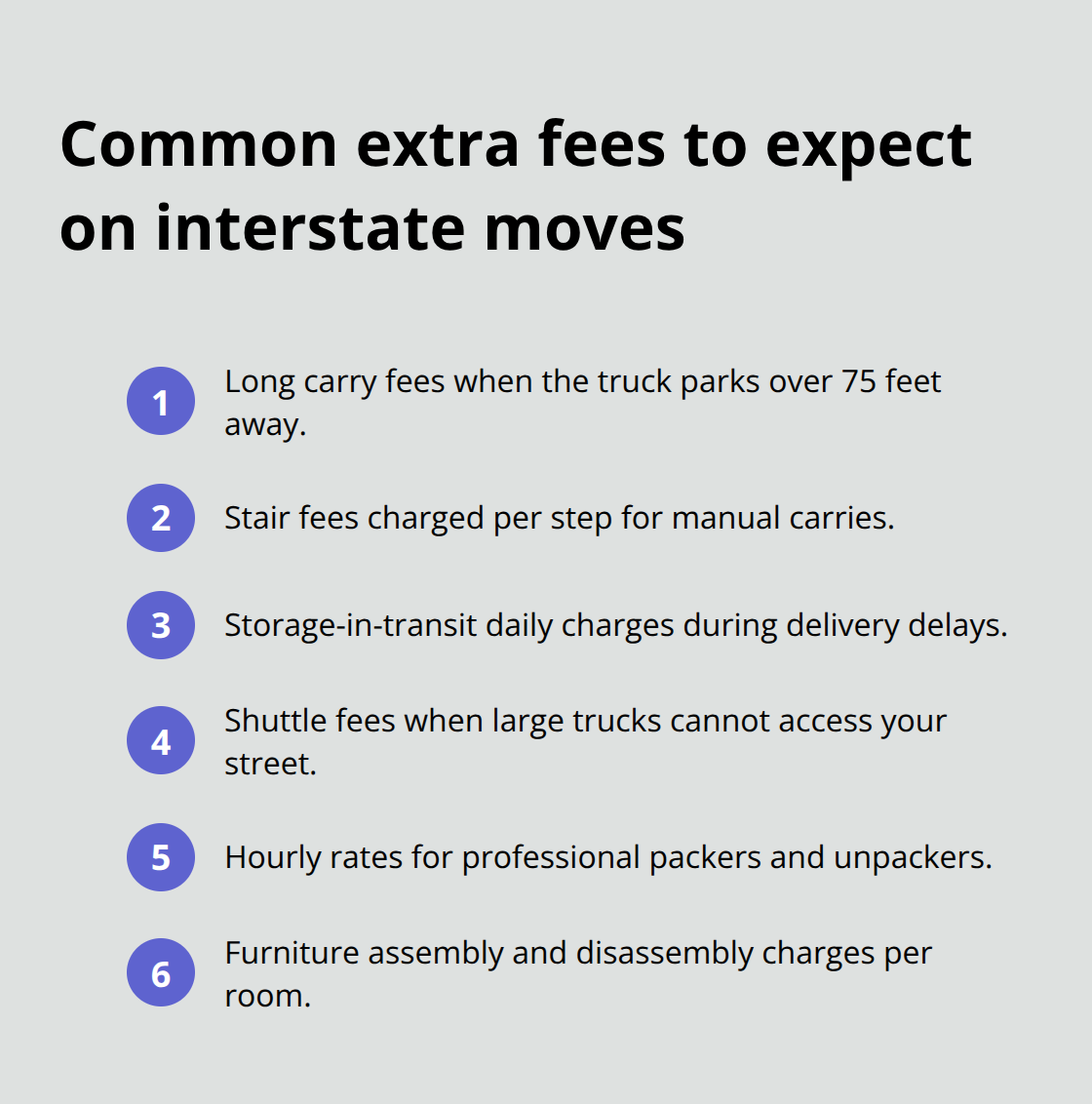Moving house long distance requires careful planning and organization to avoid costly mistakes. The average American moves 11.7 times in their lifetime, yet most people underestimate the complexity of interstate relocations.
We at Southbay Moving Systems have helped thousands of families navigate cross-country moves successfully. This guide covers the essential steps to make your long-distance relocation smooth and stress-free.
Planning Your Long-Distance Move Timeline
Starting your long-distance move planning 12 weeks ahead gives you the best chance to secure quality movers and avoid last-minute stress. Interstate moves require significantly more coordination than local relocations, with the Federal Motor Carrier Safety Administration reporting that 39% of complaints relate to moving issues.

The most successful relocations begin with a detailed timeline that breaks down tasks into manageable weekly segments.
Create Your Moving Timeline Early
Peak moving season runs from May through September, when more than 60% of all moves occur. During this period, reputable moving companies book up 8-10 weeks in advance, which leaves late planners with limited options or higher prices. Start your timeline by marking your move date and work backward to assign specific tasks to each week. This approach prevents the overwhelming rush that causes people to forget important steps like address changes or utility transfers.
Book Professional Movers in Advance
Quality interstate carriers require deposits 6-8 weeks before your move date. Start collecting quotes from at least three licensed interstate carriers by week 10 of your timeline. Verify each company’s USDOT number through the FMCSA database and check their Better Business Bureau rating. Companies with 30+ years of experience (like established regional movers) typically maintain higher service standards and better equipment. Early booking also locks in your preferred moving dates and prevents the premium that last-minute bookings often carry.
Handle Administrative Changes Promptly
Address changes and utility transfers require more lead time than most people expect. The United States Postal Service recommends you submit change-of-address forms 2-3 weeks before moving, but processing can take up to 10 business days. Contact your current utility providers 3-4 weeks ahead to schedule disconnection dates and avoid final billing delays. New utility connections often require 5-7 business days for activation, particularly for internet and cable services. Medical and school record transfers can take 2-3 weeks, especially when you cross state lines where different documentation requirements apply.
Once you establish your timeline and secure your moving company, the next step focuses on smart packing strategies that protect your belongings during the long journey ahead.
Packing Strategies for Long-Distance Moves
Long-distance moves demand a strategic approach that differs completely from local relocations. Items travel 1,000+ miles in trucks that experience constant vibration, temperature changes, and multiple transfer points. Poor packing can lead to more trips, bigger trucks, higher fuel costs, and unexpected expenses.
Start your preparation by eliminating items that cost more to move than replace. Research shows that families relocating cross-country benefit significantly from downsizing, which saves substantial costs. Apply the one-year rule: items unused for 12 months should go. Heavy furniture pieces like old dressers or worn sofas often cost $200-400 to transport but can be replaced locally for similar amounts.
Declutter and Downsize Before You Pack
Sort your belongings into four categories: Move, Sell, Donate, or Recycle. Focus on items with high replacement costs versus transport costs. Electronics, quality furniture, and sentimental items typically justify the expense. Books, old appliances, and worn clothing rarely do. Host a garage sale 6-8 weeks before your move to convert unwanted items into cash that offsets expenses. Online marketplaces like Facebook Marketplace or Craigslist work well for valuable furniture pieces that local buyers can pick up.
Use Quality Materials and Proper Techniques
Professional-grade materials prevent significant transit damage according to industry studies. Use double-wall corrugated boxes rated for 32 ECT (edge crush test) strength, not flimsy retail store boxes. Wrap each dish individually in paper, nest similar-sized plates together, and pack them vertically like records rather than flat stacks.
Electronics need their original boxes when possible – manufacturers design these containers specifically for transport stress. Fill empty spaces in boxes with paper or bubble wrap because loose items shift and create damage. Keep individual boxes under 50 pounds to prevent bottom blowouts and injuries.
Pack Essential Items for Immediate Access
Create a survival kit containing medications, phone chargers, toiletries, change of clothes, and important documents. This box should travel with you, not in the truck, because delivery delays happen on long-distance moves.

Include basic tools, cleaning supplies, and snacks for your first day in the new home.
Label boxes on two sides with contents and destination room. Color-coded labels speed up unloading: blue for kitchen, red for bedroom, green for living areas. This system cuts unpacking time significantly compared to text-only labels.
Smart preparation and quality materials protect your belongings, but understanding the financial aspects of your move helps you budget effectively and avoid unexpected expenses.
Managing Costs and Logistics
Long-distance moves cost between $2,200 and $10,500 according to industry data, but this wide range reflects significant variables that many people overlook during initial plans. The Federal Motor Carrier Safety Administration requires interstate movers to provide estimates, yet consumers still face unexpected charges at delivery. Smart cost management starts with understanding how companies calculate fees and what additional expenses you’ll encounter beyond the basic quote.
Compare Quotes Through Weight and Distance Calculations
Interstate movers charge primarily by weight and distance, with the average cost per pound ranging from $0.50 to $2.50 depending on your route. A 3-bedroom home typically weighs 9,000-12,000 pounds, which makes accurate weight estimates critical for budget plans. Obtain in-home surveys from three licensed carriers rather than phone estimates, which can underestimate actual costs by 20-30%. Companies with National Van Lines partnerships often provide more accurate weight calculations due to standardized procedures (like Southbay Moving Systems with over 30 years of experience). Request estimates that lock in your price, not non-binding estimates that can increase at delivery. Peak season moves from May through September carry 15-25% premiums over off-season rates.
Budget for Hidden Fees and Extra Services
Long carry fees apply when movers cannot park within 75 feet of your door, adding $50-200 per occurrence. Stair fees range from $2-4 per step for items that require manual transport above ground level. Storage-in-transit charges $25-50 per day when delivery delays occur, which happens on 18% of long-distance moves according to industry reports.

Shuttle service fees of $300-800 apply when large trucks cannot access your street. Professional packers cost $25-40 per hour per worker, while unpackers add another $20-35 hourly. Assembly and disassembly of furniture runs $75-150 per room depending on complexity.
Calculate Travel and Temporary Housing Costs
Cross-country relocations require 3-7 days for professional delivery, during which you need temporary accommodations. Hotel costs average $120-180 per night for family-suitable rooms, plus meals that average $60-80 daily for a family of four. Vehicle transport ranges from $600-1,400 for coast-to-coast moves, depending on your car’s size and the carrier type. Flight costs for family members can add $300-800 per person for last-minute bookings (especially during peak season). Budget an additional 10-15% of your total costs for unexpected expenses like temporary storage, replacement items, or delivery delays that extend your hotel stay.
Final Thoughts
Moving house long distance requires three essential elements: early preparation, professional expertise, and realistic budget expectations. Families who begin their timeline 12 weeks ahead, secure quality movers early, and understand true costs avoid the 39% of interstate moves that result in complaints to federal authorities. Professional services provide value that extends far beyond basic transportation.
Licensed interstate carriers handle complex logistics, provide proper insurance coverage, and possess specialized equipment for safe long-distance transport. This expertise becomes particularly valuable when you navigate weight restrictions, delivery schedules, and state-specific regulations that DIY moves cannot address effectively. The specialized knowledge prevents costly mistakes that amateur movers frequently encounter.
We at Southbay Moving Systems have guided thousands of families through successful cross-country relocations over our decades of operation. Our transparent approach eliminates the hidden fees and delivery surprises that plague many interstate moves (which affect nearly 40% of long-distance relocations according to federal data). Contact our experienced team to discuss your specific relocation needs and receive accurate estimates based on proven industry standards.




